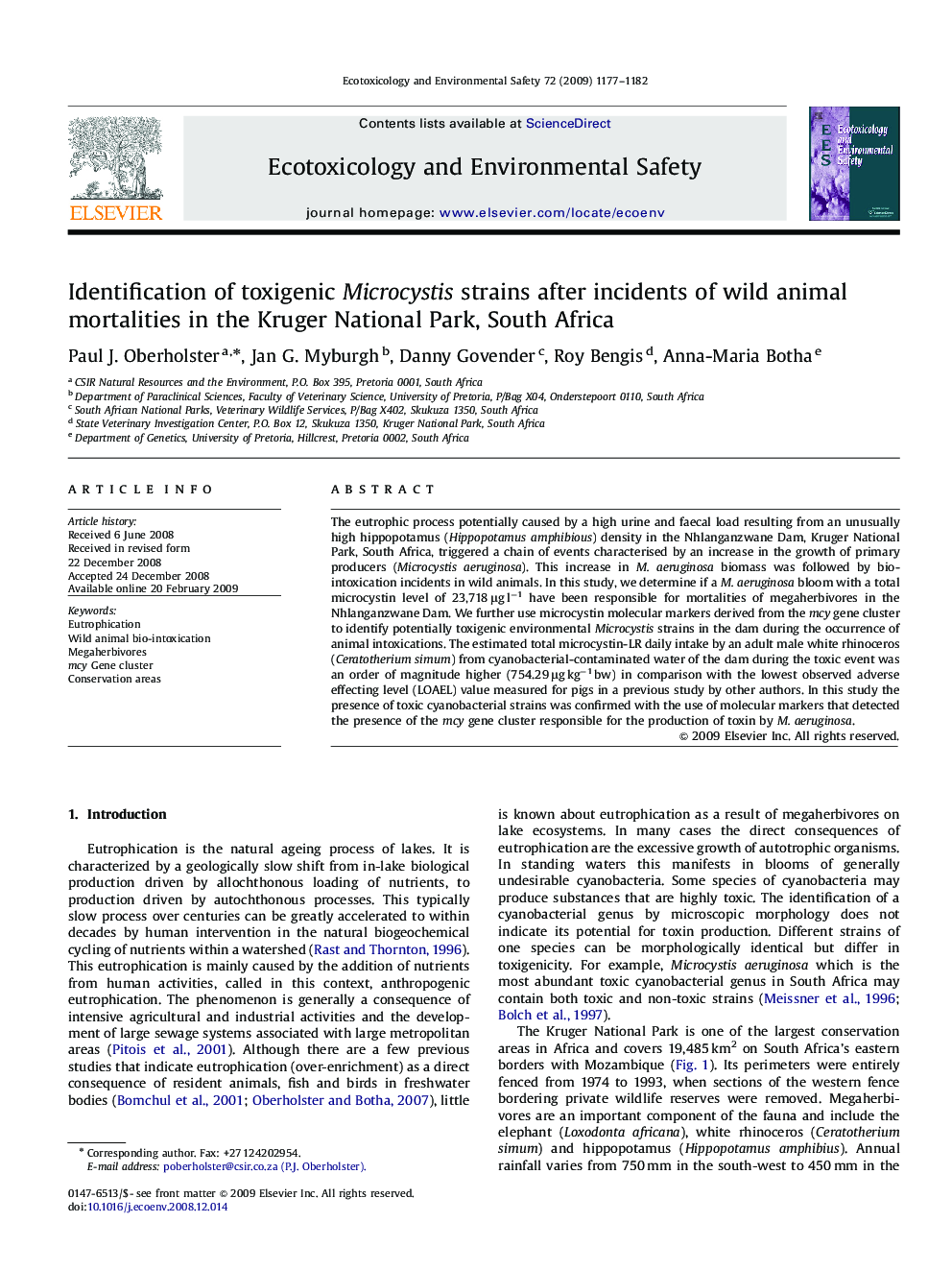| Article ID | Journal | Published Year | Pages | File Type |
|---|---|---|---|---|
| 4421963 | Ecotoxicology and Environmental Safety | 2009 | 6 Pages |
The eutrophic process potentially caused by a high urine and faecal load resulting from an unusually high hippopotamus (Hippopotamus amphibious) density in the Nhlanganzwane Dam, Kruger National Park, South Africa, triggered a chain of events characterised by an increase in the growth of primary producers (Microcystis aeruginosa). This increase in M. aeruginosa biomass was followed by bio-intoxication incidents in wild animals. In this study, we determine if a M. aeruginosa bloom with a total microcystin level of 23,718 μg l−1 have been responsible for mortalities of megaherbivores in the Nhlanganzwane Dam. We further use microcystin molecular markers derived from the mcy gene cluster to identify potentially toxigenic environmental Microcystis strains in the dam during the occurrence of animal intoxications. The estimated total microcystin-LR daily intake by an adult male white rhinoceros (Ceratotherium simum) from cyanobacterial-contaminated water of the dam during the toxic event was an order of magnitude higher (754.29 μg kg−1 bw) in comparison with the lowest observed adverse effecting level (LOAEL) value measured for pigs in a previous study by other authors. In this study the presence of toxic cyanobacterial strains was confirmed with the use of molecular markers that detected the presence of the mcy gene cluster responsible for the production of toxin by M. aeruginosa.
